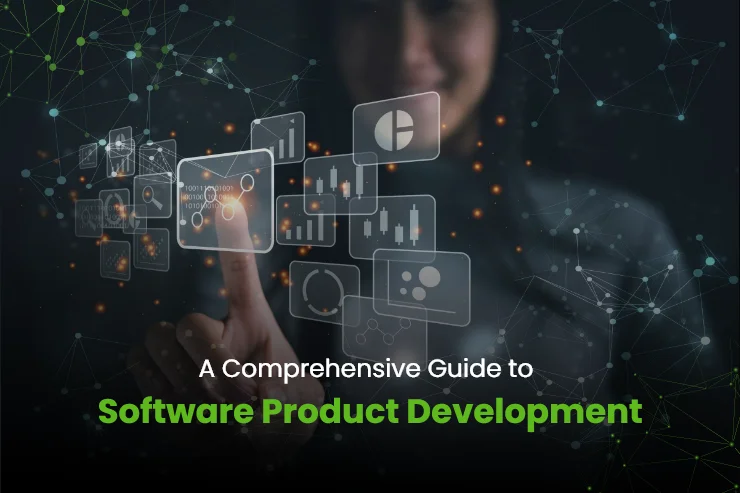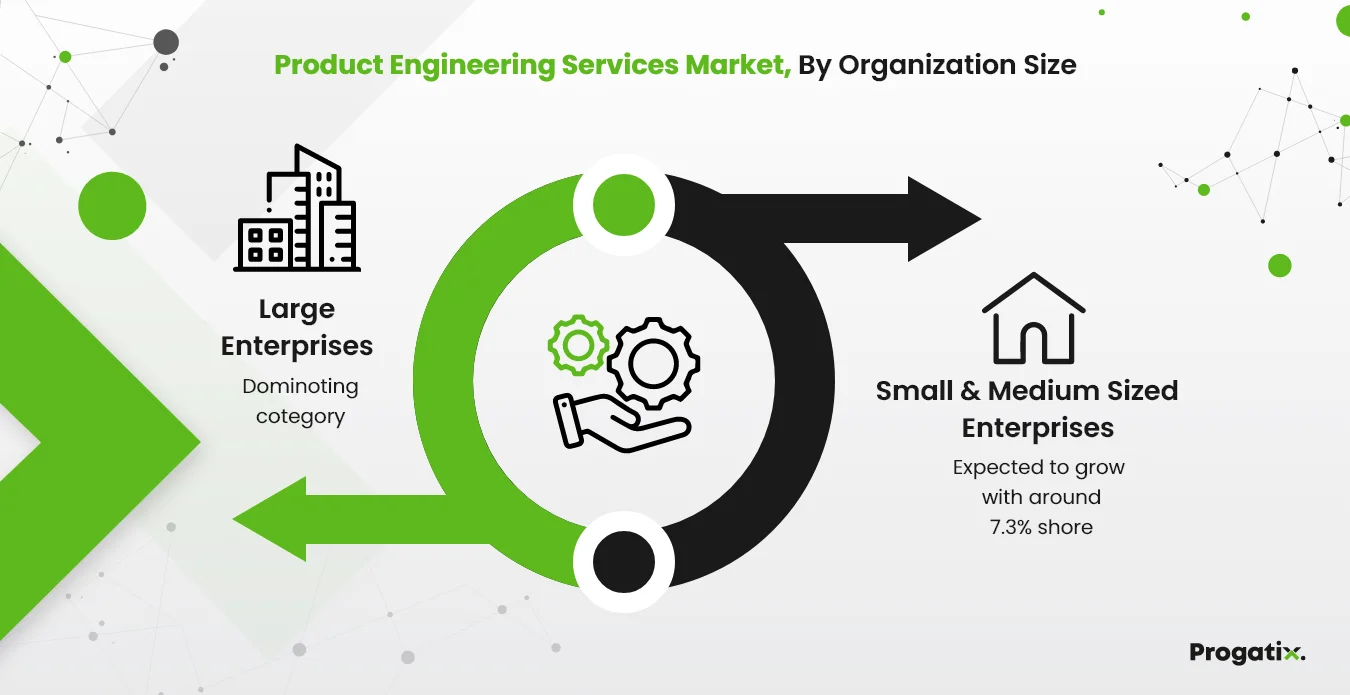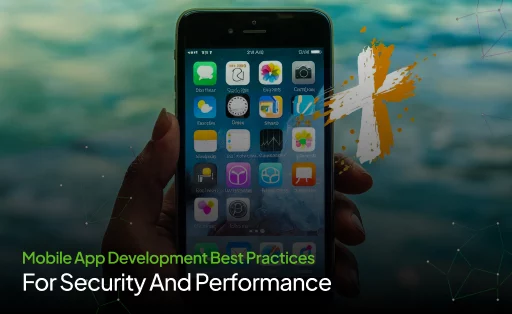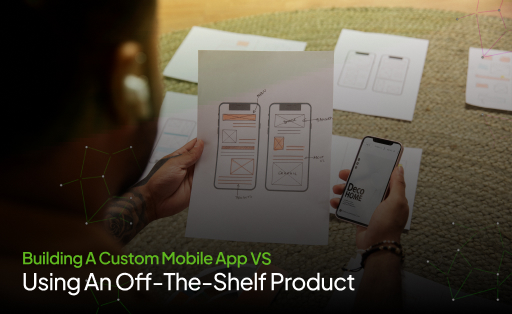Software Product Development: A Complete Guide Software Development

Nowadays, software products have become an integral part of our reality; it is tough to envision any of our regular activities not being driven by some kind of computer-related application or process!
However, when going deeper, developing a robust software product is an even more complex process to adapt. According to blog.bit.ai, nearly 14% of software projects drop because they fail to continuously follow proper software product development, and 75% of business and IT executives predict their software projects to be a failure.
According to psmarketresearch, the product engineering services market was valued at USD 1,116.5 million in 2023, which is expected to reach USD 1,840.8 million by 2030, growing at a CAGR of 7.5% during 2024-2030. This is due to the increasing demand for smart homes, lower manufacturing expenses, and continuous innovation and iteration.
Source: psmarketresearch
This is why precisely following a set of universal steps plays an important role in developing a high-quality software product that caters to specific requirements and overpowers challenges.
Meticulous software product development not only advances the end product’s quality but also the overall software development process.
Let’s probe into this all-inclusive guide to answer all your queries related to software product development!
Software Product Development
Software Product development refers to the process of forming a new product with some additional value and features, which can literally be anything, from developing a completely new product to advancing a prevailing product and enhancing the overall system’s process, technique, and development methodology. To put it differently, with newly developed software products, we can come up with changes in the current market while offering users a better customer experience. Development and innovation lead the path for new product inventions along with benefiting the customers. Software product development is a logical and stable process that aims to embody a certain personal or business purpose, technique, or goal and usually takes an all-inclusive approach involving several custom software development phases or procedures that conclude in the construction of a working software product.
Software developers also assimilate a set of third-party tools and features while creating a software product to meet certain market requirements. It aids in expanding existing processes, techniques, methods, and overall customer experience. Existing production processes, methods, techniques, and systems might all be improved to increase customer experience and satisfaction, but costs are usually less for the organization.
How to begin a Product Development Plan
1. Envision a product
It all begins with a product vision, which can bring everything to a unified place with a common goal. The product vision, the product’s ultimate goal, who it’s for, and what it achieves for them is next offered. Lastly, it rests down certain basic rules for future development.
Key goals for the product might be established once the product vision and mission statements are all set. These might be a little blurred at first, such as defining product-market fit, but they might rapidly grow into quantitative KPIs or OKRs. These measurable goals help define which features, additions, processes, and competencies the product will need to meet.
2. Create a roadmap
You must create a design before implementing an action plan. After doing the actual customer requirements analysis and validation, the product team might generate a product roadmap highlighting the major topics to be mentioned. You can plan the schedule according to date-based milestones and distinct targets. The focus must be on providing value and returning to product goals and performance beside key pointers rather than on dates.
3. Roadmap implementation for maximum impact
It’s time to put the product strategy into place after everyone has agreed on it. Implementation teams may make timetables, divide major topics into sprints, and establish product iterations. The input of customer surveys, the sales staff, and support all provide input, discovering new opportunities, pointing out flaws, and highlighting areas to sharpen, enhance, and grow. Several key documents, such as product design documents and software requirements specification documents, are prepared for the implementation of the roadmap.
From then on, it’s a never-ending cycle of examining data, aggregating input, and constantly revising the product roadmap while grooming the product backlog to ensure that every software development life cycle is put to the best possible use.
Types and features of product development software
The list below defines the product development software’s full spectrum. It begins with tools supporting early product development, i.e., brainstorming and strategizing, and moves through the process. Features like your company’s resources, product type, and development methodology will outline what you need during the process. You might choose to spend on multiple separate tools or a larger, end-to-end software suite to cover these competencies.
As part of your product development software, you must preferably have all of the following types of tools or features:
1. Creative tools
Creative tools aid in brainstorming and exploring your product concepts through notes, mockups, flowcharts, and other diagramming structures. These tools can also support your strategic work with diverse business models for planning out your company vision, standing, or performance.
Inventive product development tools and features comprise:
- Mockups and wireframing
- Diagramming
- Virtual whiteboards
- Physical or digital notebooks
2. Customer feedback tools
With customer feedback tools, you are allowed to collect ideas from internal and external stakeholders besides organizing, evaluating, and prioritizing the input you obtain to reveal trends and update your product roadmap.
Customer feedback tools and features involve:
- Ideas portal and idea management software
- In-app feedback widgets
- Surveys and polls
- Reporting and analytics on feedback trends
- Ability to host live focus groups or empathy sessions
3. Product road mapping tools
You can utilize road mapping software to improve product ideas and add structure to them with features, releases, and supplies. You can then plan when you will deliver those new features to customers. Visual roadmaps help you to showcase your plans to stakeholders, monitor progress, and manage product launch activities.
Road mapping tools and features include:
- Visual release timelines and Gantt charts
- Product backlogs
- Workflow boards containing features and requirements
- Presentation tools
- User story mapping
- Roadmap builder and templates
4. Agile development tools
Agile development tools let your development team set up all the new functionality you have to brainstorm, advance, and schedule on your product roadmap. You will need to choose a tool that aligns well with your team’s specific agile development methodology.
Agile development tools and features involve:
- Ability to assign work to the development team
- Kanban and scrum workflow boards
- Sprint planning
- Documentation (e.g., for an internal wiki or knowledge base)
- Sprint backlogs
- Ability to write user stories and tasks
- Progress tracking and other agile analytics
5. Product analytics tools
After your product has been published to customers, you will require a tool assessing your success besides measuring product value and performance via tracking customer usage and happiness with product analytics software.
Product analytics tools and features comprise:
- Ability to measure quantitative metrics (e.g., revenue, active users, and churn)
- Visual reports for uncovering trends and insights in your data
- Ability to measure qualitative metrics (e.g., Net Promoter Score, lovability)
Benefits of Product Development Software
The benefits of product development software are:
1. Planning: Idea Generation to Launch
Product development software helps streamline all development stages, beginning from idea generation to the product launch. The software proposes an integrated workflow, allowing you to competently create a product roadmap besides keeping track of activities, priorities, and deadlines. This helps you focus on making an excellent customer experience and catering to business needs instead of getting entangled in day-to-day tasks.
2. Real-Time Collaboration and Feedback
Another important aspect of product development software is its capability to simplify real-time collaboration and feedback, besides allowing you to share ideas, documents, and progress updates with team members, irrespective of their location. Using a unified environment, you can share feedback, mark critical decisions, and modify your strategies as required. The software also allows you to track any changes and updates, ensuring that everything aligns with your product development strategy.
3. Automated Tasks and Processes
Product development software includes various automation features that help you manage tasks more efficiently. It allows you to:
- Allocate resources more effectively
- Identify bottlenecks and take appropriate action
- Monitor project progress and make adjustments as needed
- Automate repetitive tasks, such as sending reminders or updates
These automated processes save time, letting you focus on more significant aspects of the product development process.
4. Prioritization Management
Prioritization plays a vital role in ensuring that the most valuable features are developed first and are constantly evaluated with the business value of each requirement and aligned with the project’s complete project. This allows me to assign resources effectively while ensuring maximum return on investment (ROI). Product development software can aid in tracking and ranking your primacies, occasionally even allowing your team to “vote” on what items to work on first.
5. Resource Allocation
Resource allocation is another significant aspect of product development, as it is important to balance the development team’s workload while making sure that each team member is employed efficiently. Efficient resource allocation leads to the end product’s enhanced productivity and quality as it allows team members to focus on their areas of knowledge.
Product development software can help by allowing you to:
- Assign resources based on skills and team members’ availability
- Regularly reexamine priorities built on evolving market demands and customer feedback
- Use tools, such as backlog management and tracking systems, to effectively manage priorities and resource allocation
6. Kanban and Scrum Integration
Kanban and Scrum are two widespread Agile methodologies that support proficient product development. Product development software can aid you in organizing your work based on your preferred methodology.
By using the methodology of your choice, product development software can aid you:
- Clearly picture the development process and make the identification and improvement of the bottlenecks easily
- Improve communication and collaboration within the team, as everyone knows the status of continuing work items
- Confirm that new work items are added to the development cycle only when the team has the capability to manage them, besides avoiding overload and maintaining a maintainable pace.
- Adjust to changes rapidly, as the integrated process allows for constant feedback and enhancement.
Diverse types of product development software will have different domains, so you can select one supporting methodology you use the most.
Different Software Product Development Methodologies
There are several software product development methodologies accessible in the market today, each providing a diverse set of advantages: from reduced risk to enhanced process efficiency and uninterrupted restatements to improved scalability.
Look at these most popular software product development methodologies and decide which one fits the best for your business demands best.
1. Waterfall
This is one of the initial software product development methodologies, the waterfall model that integrates a series of consecutive stages: from formation to maintenance. Since this model confirms that well-defined goals are accomplished, it is best for projects where requirements are clear, and documents are precise, recounting how the system is to be formed.
2. Agile
The agile methodologies are where software products’ new upgrades & releases are created and made accessible to customers every few weeks.
For every stage of the product, more characteristics can be tested, included, and again tested after getting feedback from customers. Agile methodology saves time and ensure the end product meets the future requirements.
3. Scrum
Scrum refers to a subset of Agile methodologies and is used to manage the software product development process at the macro level besides following Agile’s principles and values. Plus, it shields further specification and description by reflecting some crucial software product development practices. This approach is most appropriate for software products with evolving demands.
4. Incremental and Iterative
The incremental and iterative software product development approach is like a center ground between the upfront planning of the Waterfall process and the flexibility of the Agile process. While both follow the idea of generating bits of software and revealing them to customers for feedback, they vary in what you make during each release.
Takeaways
With companies spending substantial time and effort in developing software yet being at risk of failure, the importance of the software product development process is indisputable. The major consequence of following a recommended software development process is that it will offer code development and project implementation fluency to all of the project stakeholders, besides enabling system requirements to be traced to the business requirements and providing a solution that best fits needs. By reflecting on the pros and cons of the methodology, choose the model that works best for your organization and leads you on the path to success.
If you are looking for software product development, we at Progatix have a dedicated development team with highly qualified and trained members who deliver innovative solutions according to the industry requirements.



 Let's Discuss Your Tech Solutions
Let's Discuss Your Tech Solutions 






